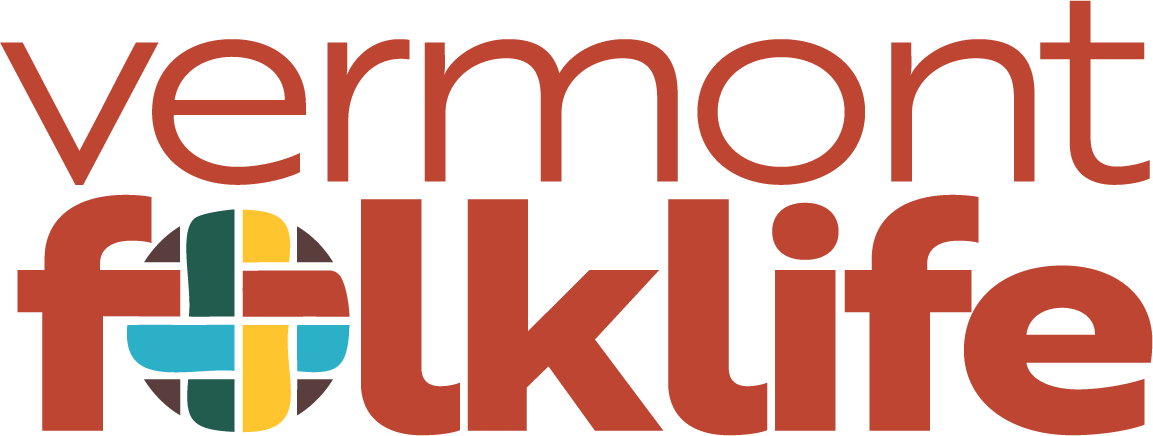VFC’s Collection to Reach National Audience
By Susan Creighton
This month’s blog post brings you information about the Vermont Folklife Center’s participation in an exciting, new national effort! With the support of the Council on Library and Information Resources (CLIR), VFC continues our partnership with the American Folklore Society (AFS) on the National Folklore Archive Initiative. Our new CLIR-funded project pilots an approach aimed at helping small ethnographic archives—archives like VFC—make their resources available on a national level.
For many smaller organizations, the process of digitizing holdings to preserve them and make them available online is more complex and more expensive than it might seem at first glance, requiring special equipment that may be beyond the reaches of some budgets and a large amount of computer space to store the files. To address this need among ethnographic archives, AFS, the University of Oregon (UO) Libraries and VFC are testing a distributed approach to digitization and access.
As a part of the project, VFC and UO Libraries will mail their analog media materials to AFS, who will then organize them and ship them in bulk to digitization vendors. The materials will be returned to AFS for quality assurance review, packed up, and original materials and digital files will then shipped back to VFC. Once returned, VFC will upload digital materials to AFS’s Folklore Collections Database (FCD) where they can be accessed by the public. Currently FCD provides information about ethnographic collections from over 100 different repositories—but not access to the actual content being described. Through the CLIR pilot project we will begin adding digital items—audio recordings, transcripts and images—in addition to the metadata, allowing researchers to access both information about the resources and the resources themselves.
The Vermont Folklife Center was asked to choose 11 different collections to submit for the project, and we selected a cross-section of content from our un-digitized materials.
Several of the collections focus on life on and around Lake Champlain. The Legacy of the Lake project (from 1983) is an extensive collection of interviews conducted by VFC founder Jane Beck with individuals who lived and worked on or around Lake Champlain. In the 1860s, Burlington was the third largest lumber port in the U.S. and Lake Champlain was a busy hub of commerce, including transportation of goods and people, commercial fishing, and smuggling! The Lure of the Lake project (from 1987) contains a series of interviews collected as part of an exhibit on the cultural heritage of Lake Champlain. In the Lake Champlain Project (from 1993), VFC former folklorist Greg Sharrow builds off the research done for Legacy of the Lake to explore through interviews the lake’s place in the culture of the region and its economic and recreational impact on Vermont, New York and southern Québec. The Ticonderoga collection (from 1994) provides interviews that focus exclusively on the steamship Ticonderoga that served ports in New York and Vermont from 1906-1953.
Another group of collections highlights work by the Vermont Arts Council on various artists around the state. The Barre Sculptors collection (from 2004) consists of a series of interviews with stone sculptors from Barre, Vermont. Two other collections highlight artists in the state from underrepresented cultural communities and from immigrant and refugee populations. The Educated Hands collection (from 1993) is a video project documenting the heritage of National Heritage Award-winning, New Hampshire basket maker, Newt Washburn.
The final group of collections focus on a constellation of elements of Vermont folklife.
The Always in Season Video Series collection (from 1979) captures the work of six Vermont and New Hampshire folk artists, including Jesse LaRoque (right) preparing wood for basket-making, Nellie Staves displaying her intricate carvings in giant fungus (learn more about Nellie in our episode 5 of our Vermont Untapped podcast.
The New England Storytelling Project collection (from 1998) documents a 5-year research initiative that explored regional culture, occupational practices, and traditional arts across all six New England states. It provides a complex, multigenerational snapshot of life in New England, touching on topics such as coastal fishing, Native Americans’ experience, Yankee and Franco-American identity, immigrant and refugee lives, and traditional music.
The Visit’n collection (from 1994-2003) documents Vermonters interviewed for VFC’s annual serial, Visit’n. Visit’n touched on such topics as “Culture and community,” “Encounters between native Vermonters and newcomers,” and “Operating a family business or sustaining a dynastic specialty in Vermont.”
These 11 collections provide just a glimpse into the rich collection of material that is housed in the VFC archives. Participation in this grant will allow these materials to become available electronically to a much wider audience in the months to come.
Our thanks to the Champlain Valley National Heritage Partnership whose support makes this blog series possible, and whose mission includes supporting the cultural heritage learning of the Champlain Valley region.

